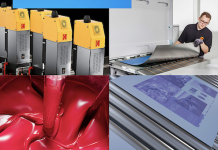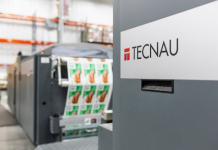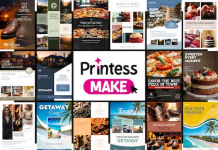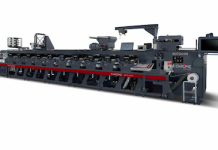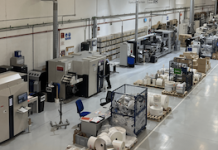By Professor Frank Romano, RIT
We are in one of the most exciting periods for the printing industry, no matter where you are in the world. Traditional printing processes—call them analogue if you wish—are seeing increased competition from new digital printing processes.
We are only one and a half years from Drupa. We still have not seen a Landa Nanographic Printing press delivered to a customer. Benny Landa says that the Drupa 2012 models were not exactly what customers wanted. Folding carton converters wanted inline coating. The big touchscreen user interface—although universally loved—needed to be at the delivery station. And operators needed more convenient access to the machine’s inner workings. Landa had to completely re-engineer the press. It all took a lot more time and money than expected. I have interviewed customers who signed the letter of intent and visited the futuristic Landa facility in Israel. Every one of them is still happy to be on the list and dying to get their machine. I think the first few devices will be shipped in the second half of 2015. This will provide excellent feedback by the time of Drupa and perhaps other surprises from Landa.
But Landa may only be the tip of the iceberg. New developments in liquid toner are creating a whole new class of digital presses. We expect surprises from every known and some unknown suppliers.
It is less than two decades since wide format printing came into existence and now it is a
mainstay of almost every printing business. It is a natural extension of the visual communication services that printers must provide.Services that printers are offering are expanding to include non-paper-print, like 3D printing and printed electronics. I call it 'new print' because it goes beyond flat paper. The MGI and Scodix devices that create embossing effects with layers of inkjetted polymer are part of all this. Take them to another level and place layer upon layer to produce and number of products. Already, printers worldwide are selling these new services, even though the technologies are still evolving.
A few months ago, HP shook up the market with an industrial-strength 3D printer that is ten times faster that those on the market today. New finishing systems are integrating laser diecutting and even innovative approaches to creasing for packages. The Highcon machine is a good example. It can do the most complex diecuts that make paper into works of art.
All of the offset litho press makers have announced some development with partners to move them into digital printing. Most printers continue to hold on to their legacy presses, even though one new press can do more than three older presses. But runs are shorter and shorter and digital has the advantage.
Look for Canon/Océ, Xerox, Ricoh, Konica-Minolta, and others to augment their laser printing lines with inkjet. They will offer capability at almost every level for every size of print shop. Many of the suppliers are focusing on high end users, but those market segments will saturate quickly and the technology will then permeate medium and even smaller users.
Although packaging is still the major market focus, from tags and labels, to folding carton and flexible, there is still a lot of document-type brochures, flyers, booklets, and more. A blend of different devices will be needed to satisfy all customer demands.
The major demand will not be quality. That is a given. Printing sales will be based on time—the ability to meet unreasonable schedules. Long runs will be rare so design your system for short runs.
Tweak your website so customers can find you and do business with you easily. In major Western markets, online print services are growing at a high rate. They have mastered handling and producing lots of small orders. You should too.
2016 will be my 11th Drupa. That is 44 years of Drupas and every one of them has been a surprise. 2016 will be no different. Thus, industry suppliers will have to do something to keep our interest during 2015. Look for special events, private showings, lots of non-disclosures. The printing industry cannot slow down or stop because we are waiting for a trade show. Acquire the system you need now and put a clause in the contract for a credit on anything new that will replace it within one year.
The printing industry worldwide is finding its level and there is even some growth in certain segments. 2015 will be a good year.
You can read other articles such as this in the Africa Print Journal magazine: https://www.africaprint.com/magazine





